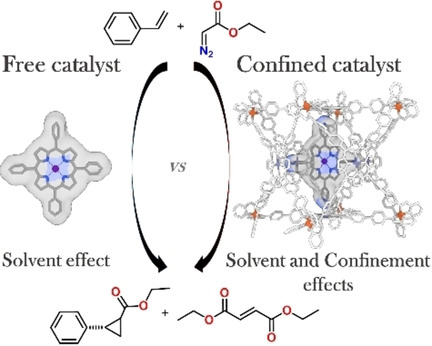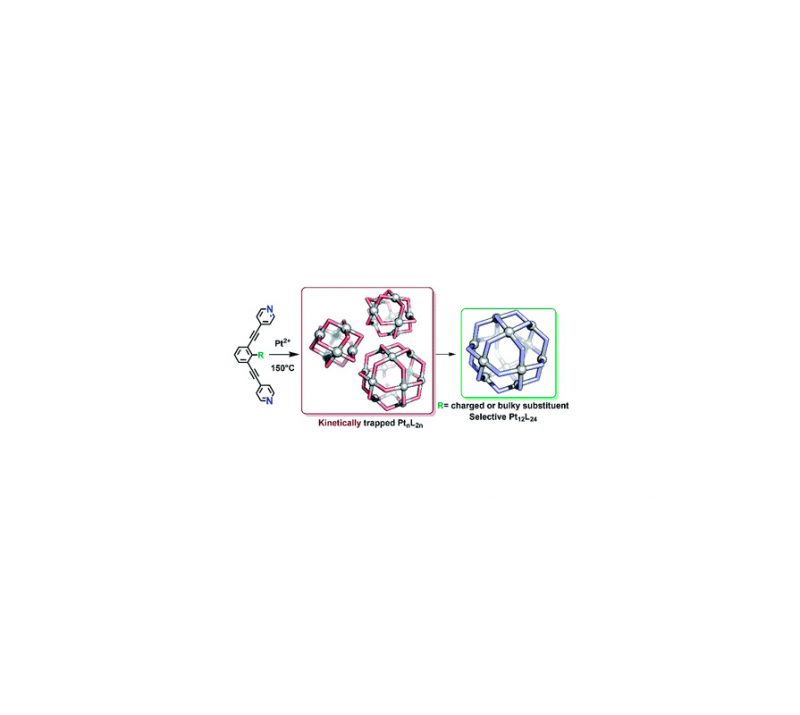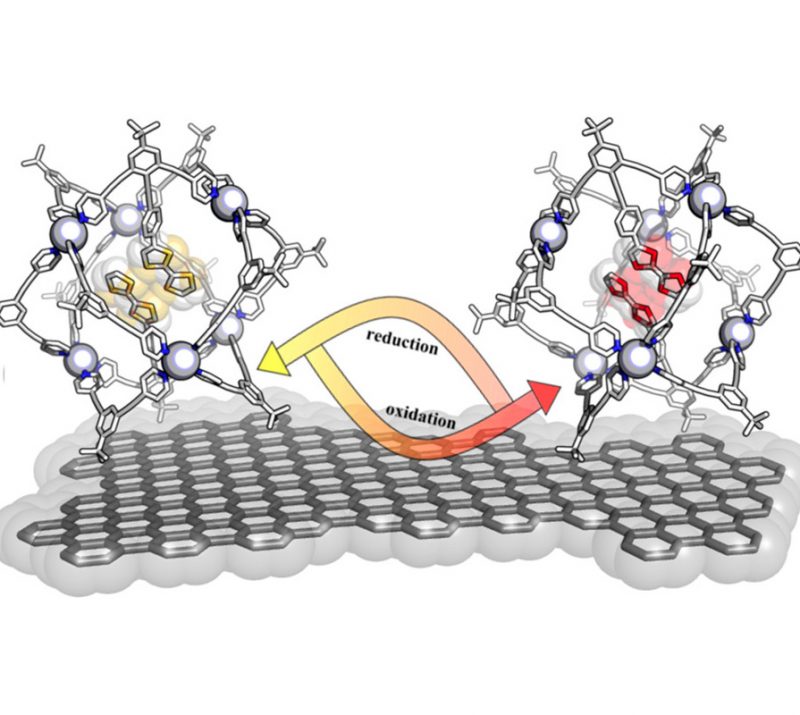
Valentinos Mouarrawis, Eduard O. Bobylev, Prof. Dr. Bas de Bruin, Joost N. H. Reek
Chemistry A European Journal, 2021, 27(32), 8390-8397
DOI: 10.1002/chem.202100344

Abstract
Confinement of a catalyst can have a significant impact on catalytic performance and can lead to otherwise difficult to achieve catalyst properties. Herein, we report the design and synthesis of a novel caged catalyst system Co−G@Fe8(Zn−L ⋅ 1)6, which is soluble in both polar and apolar solvents without the necessity of any post-functionalization. This is a rare example of a metal-coordination cage able to bind catalytically active porphyrins that is soluble in solvents spanning a wide variety of polarity. This system was used to investigate the combined effects of the solvent and the cage on the catalytic performance in the cobalt catalyzed cyclopropanation of styrene, which involves radical intermediates. Kinetic studies show that DMF has a protective influence on the catalyst, slowing down deactivation of both [Co(TPP)]and Co−G@Fe8(Zn−L ⋅ 1)6, leading to higher TONs in this solvent. Moreover, DFT studies on the [Co(TPP)]catalyst show that the rate determining energy barrier of this radical-type transformation is not influenced by the coordination of DMF. As such, the increased TONs obtained experimentally stem from the stabilizing effect of DMF and are not due to an intrinsic higher activity caused by axial ligand binding to the cobalt center ([Co(TPP)(L)]). Remarkably, encapsulation of Co−Gled to a three times more active catalyst than [Co(TPP)](TOFini) and a substantially increased TON compared to both [Co(TPP)]and free Co−G. The increased local concentration of the substrates in the hydrophobic cage compared to the bulk explains the observed higher catalytic activities.


